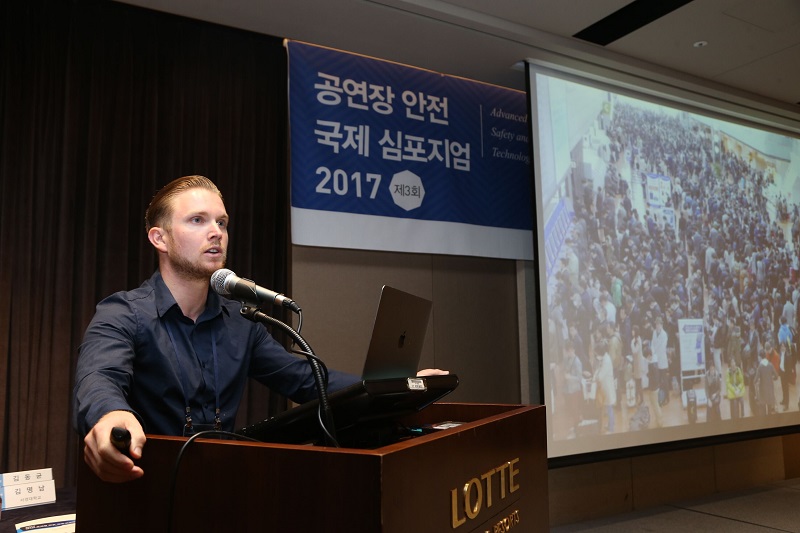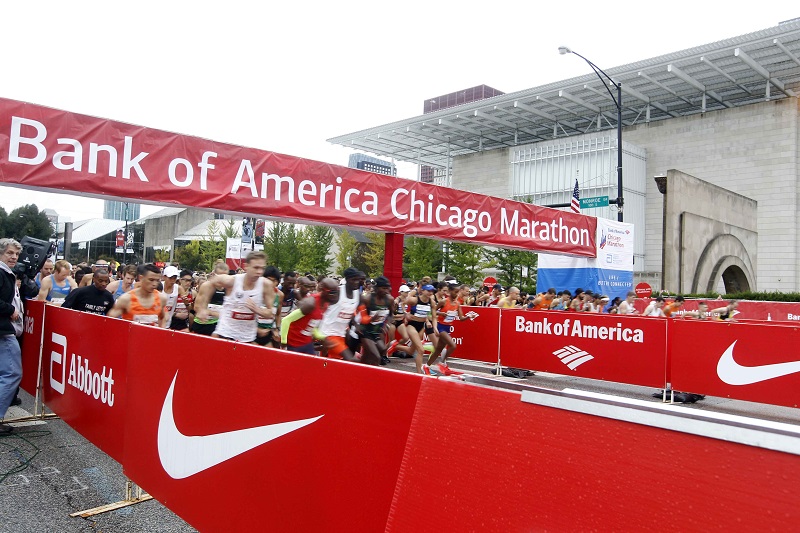Cracking the marathon code
The police didn’t know if the bomb threat was real or not. But they had to act.
Thousands of people were either running in or watching one of the world’s biggest marathons.
The options were to deal with and eliminate the threat – or stop the race.
They turned to their expert who told them they had 32 minutes to make the decision before runners would start to pass the potential bomb location.
The police raced to deal with the situation, managing to resolve it with minutes to spare.
But this wasn’t some script from a movie. This was real life.
And the expert was a Manchester Metropolitan University crowd scientist who is part of a team revolutionising marathon management around the world.
We’ve cracked the code of what happens between the start and the finish of a marathon
Thousands of people every year attempt to cover the iconic 26.2 mile distance made famous by the legend of the messenger Phidippides, who reportedly ran from the town of Marathon to Athens to deliver the joyous news of the defeat of the Persian armies.
Marathons are a test of stamina and mental toughness that provide the opportunity to raise money for good causes, meet new people and see the world. And they are big business.
However, runners and bystanders rarely stop to think just what goes on behind the scenes to ensure the events go off without a hitch.
With so much at stake in terms of the large numbers of participants, spectators, volunteers, local residents and TV viewers and a complex logistical setup, the world’s top marathons are turning to Manchester Metropolitan’s crowd science expertise for help.

Marcel Altenburg, Senior Lecturer in Crowd Science, has developed a unique mathematical algorithm to help race organisers visualise the flow of runners through the entire course.
Race management teams who previously relied largely on experience when considering the impact of a planned alteration or unexpected turn of events, can now utilise the game-changing system Start Right, which Altenburg refined with the help of colleague and mentor Keith Still, Professor of Crowd Science at Manchester Metropolitan.
Pin-point predictions
Altenburg said: “When you look at it from a crowd dynamic perspective, a marathon is highly dynamic.
“Compare it to a sports event in a stadium, where you know what time the crowd will arrive and what time they’ll leave, where they will sit, what time they go to buy refreshments, what time they use the facilities.
“We know people roughly walk at the same speed and can calculate how long it will take to fill up or empty a stadium.
“A marathon is a stadium-sized crowd, but you don’t have the same infrastructure.
“People are not only running at different speeds, but starting at different speeds.”
In designing the algorithm, Altenburg drew on the University’s crowd science knowledge, using everything from behavioural science to coordinating public transport times, and from determining surface capacity to mapping flow analysis and density.
The model makes 8.6million calculations to estimate the volume of people at any particular geographical point.
“We can predict every single runner,” Altenburg said. “We have an accuracy of 99.9 per cent and above. “As a challenge, one marathon asked us if we could tell them how many people would cross the finish line in their busiest five minutes.
“They gave us all the details from the start and we calculated the busiest period would be around 4h 25m into the race.
“We estimated 1,366 runners would finish in those five minutes.
“Afterwards we checked against the official data and in reality 1,367 finished. We were one person out.
“It taught us that maybe we were on to something.”

The comprehensiveness, exactitude and flexibility of Start Right are its selling points.
It can take into account tweaks to every element in order to forecast the impact down the road on the contingent of runners.
Race organisers enjoy the freedom to suggest hypothetical adjustments to variables such as the course route, start timings, entrant numbers, facilities placement and staff levels, and then see via graphs what the consequences would be – something that would be impossible to experiment with in reality given the enormity of the events and the limitations.
It was this technology that helped with the bomb threat and allowed Altenburg to give such a precise timescale to police to allow them to resolve the issue without the event being affected.
Having the power to accurately predict the way a race develops enables marathon management to streamline operations with regards to course width, road closures, staffing levels, water stations, midrace changes, television coverage, managing flows at junctions and merger points and the deployment of emergency services.
Mike Nishi, General Manager of the Bank of America Chicago Marathon, said: “I appreciate Marcel and Manchester Metropolitan University’s devotion to our sport and in particular our events that we produce at Chicago Event Management.
“They are doing some amazing work and helping improve our sport and respective events with their involvement, passion and innovations.”
Jim Heim, Senior Vice President and Race Director for the TCS New York City Marathon, said: “This perspective might very well move an entire industry forward.”
The Hollywood of crowd science
Altenburg is in demand all over the world as a consultant, utilising Start Right for the whole range of race distances.
Altenburg calls Manchester ‘the Hollywood of crowd science’ – and he is most proud of his work with the Abbott World Marathon Majors: the “big six” of Tokyo, Boston, London, Berlin, Chicago and New York City.
He said: “The Abbott World Marathon Majors are the ones with the highest quality in terms of safety and runner experience, on the planet.”
He has also helped design new courses, such as in Thailand, and revise the start layouts of others.
The start is the single most important element as it is the last time the organisers can affect the runners without interrupting or impeding their race, so Altenburg and his clients focus intensely on this aspect.

Even as slight a difference as gently moving a traffic cone to the side of the start line, as one top athlete once did to give himself a clear getaway, can have unintended repercussions that would be unforeseen until now.
As Altenburg says: “Every centimetre counts. Even a small change can make a massive difference in an event of the scale of a major marathon. Moving a barrier or poor measurements at the start could effectively change the journey of tens of thousands of runners. That is why the organiser constantly checks the start and any adjustments are re-calculated live.”
Altenburg is often present during a race in case he needs to be called upon midway through to run calculations “on the fly” and help solve any potential problems down the track.
In the end it all comes down to efficiency. Marathon operators want the runners to have the safest and most enjoyable experience possible, while simultaneously making the most cost-effective use of their resources.
Altenburg said: “We’ve cracked the code of what happens between the start and the finish of a marathon.
“We found out what we wanted to find out and now the question is: what do we want to do with it? The possibilities are endless.”
